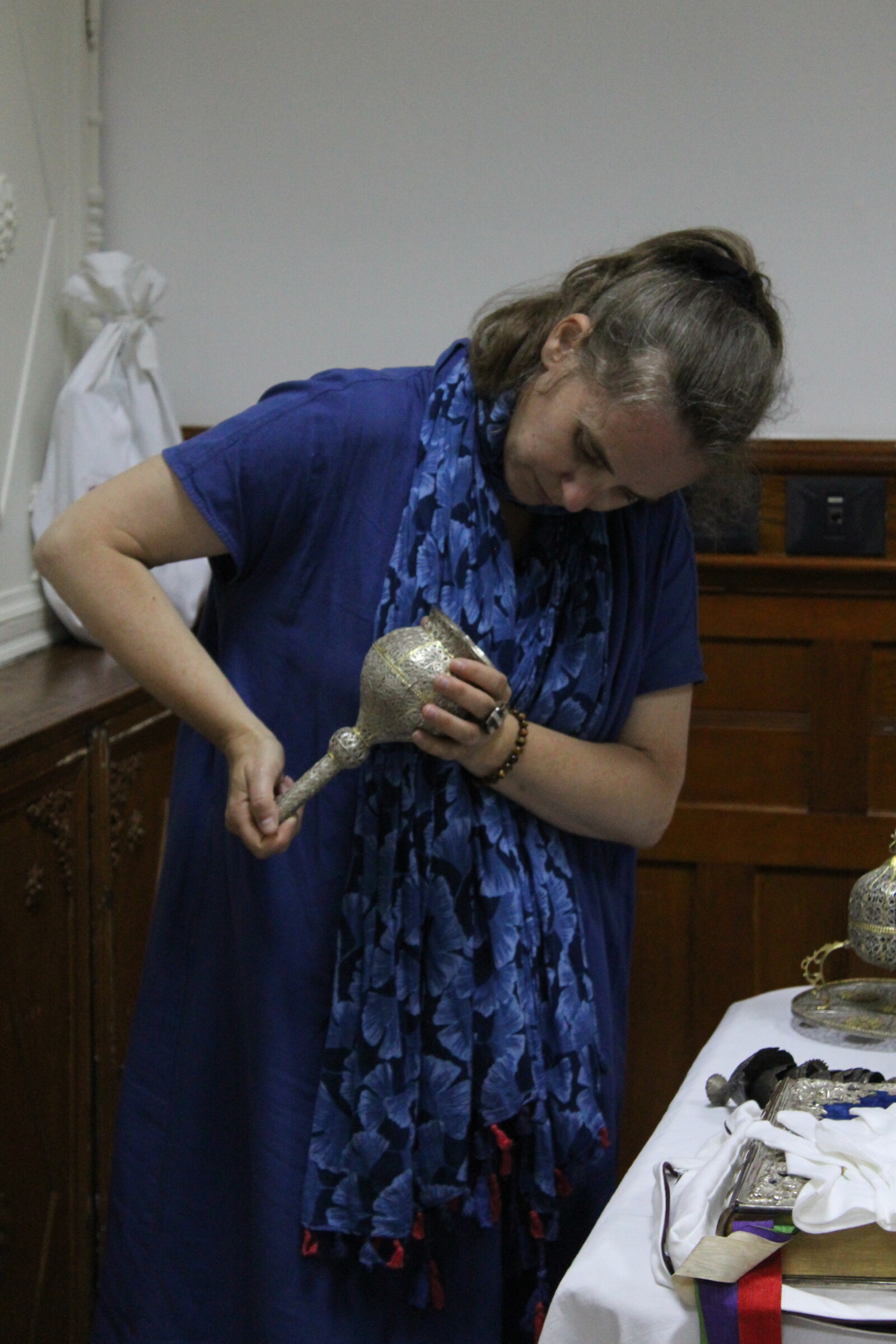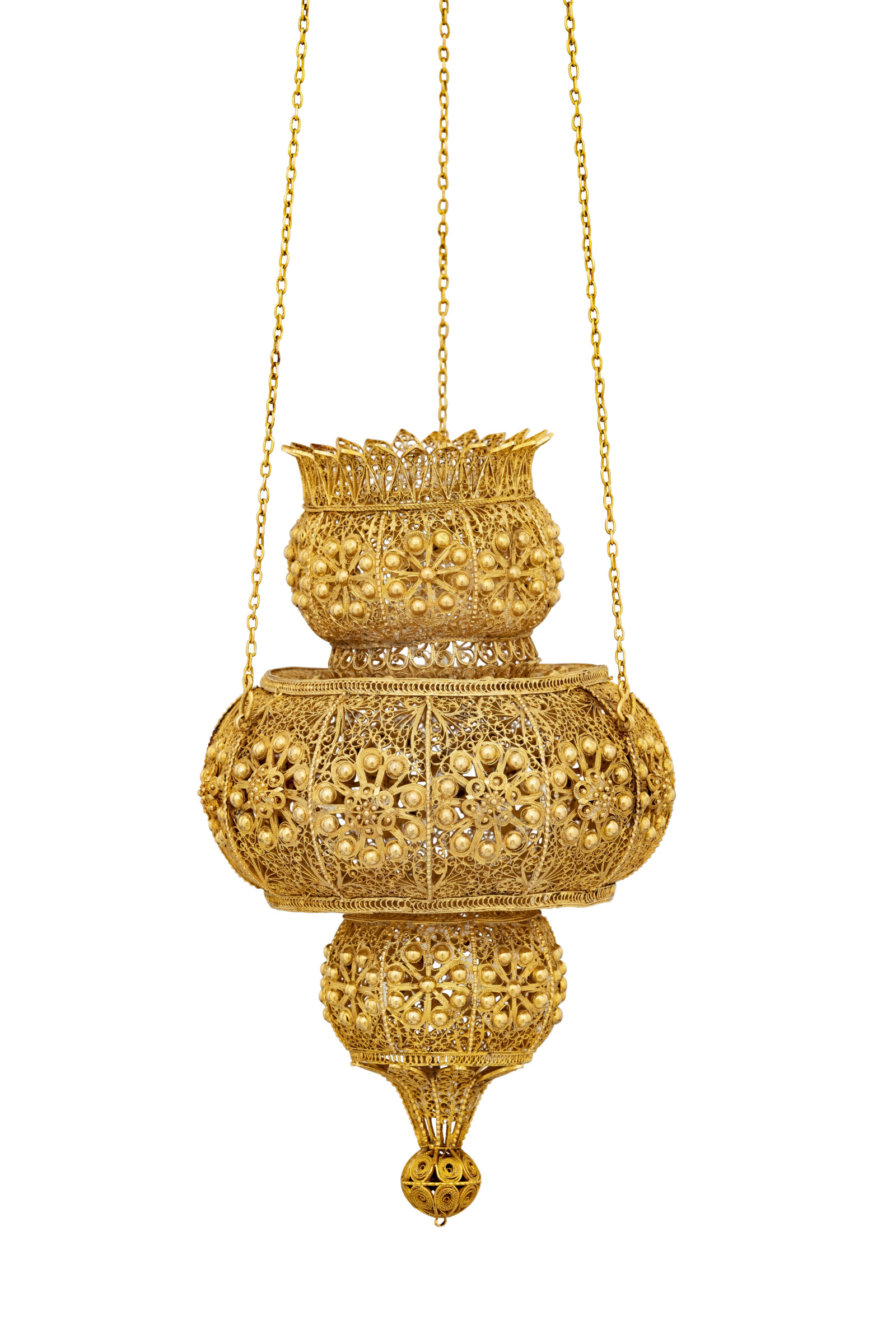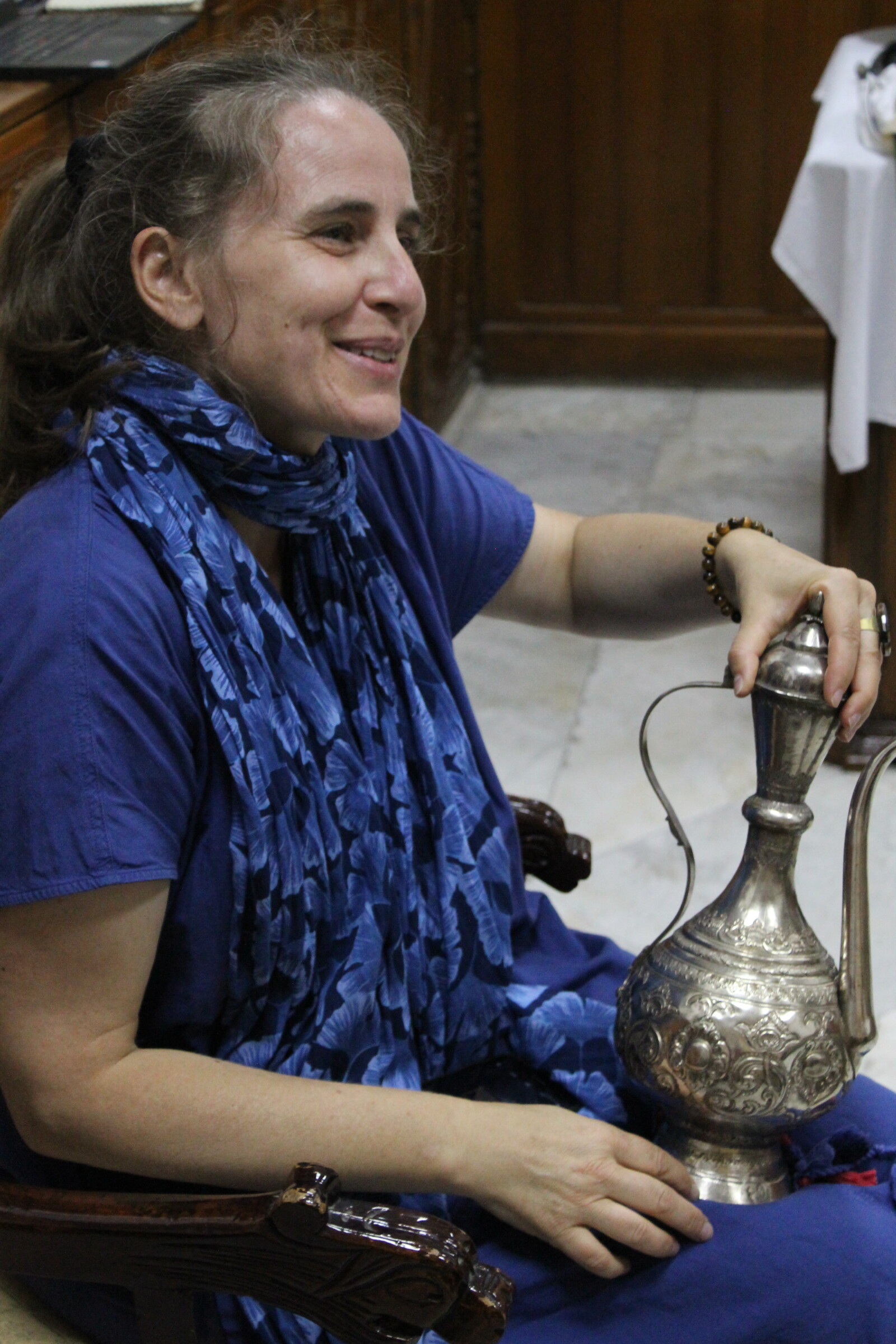The Ottoman objects of the Terra Sancta Museum : “Everything has still to be discovered”
Charlotte Maury is in charge of the Ottoman collections and the Art of the Book in the Department of the Arts of Islam of the Louvre. Her background includes command of Persian and Turkish and some notions of Arabic, all of which are invaluable languages to understand the works and sources of the Ottoman period. She has accepted placing her expertise at the service of the Terra Sancta Museum. We met her for you.
Hello Charlotte, how did you join the adventure of the Terra Sancta Museum and what are you discovering?
I was asked to join by Michèle Bimbenet-Privat, a colleague in the Department of objets d’art who called me one day explaining the project to me. After a brief telephone conversation she invited me to her office and showed me some photos of objects considered Ottoman. They were objects that I did not necessarily have the habit of studying, which was all the more interesting. The prospect of going to Jerusalem was of course very attractive and so I said that I would be bound to learn many things. I must admit I had never heard of the Terra Sancta Museum ! I was also unaware of the role of the Franciscans in the Holy Land and I did not know to what extent they were present in the Old City. So I learned a lot on this point!

What are these Ottoman objects on which you were asked to work?

There is a silver ewer and basin, an aspersorium and a table thurible with a filigree decoration and a fastening for a liturgical vestment, for example. Even though the Franciscans used the aspersorium at the celebrations of Good Friday, this type of object is also known in the Ottoman period in non-religious contexts of use. The basins and the ewers, the aspersoria for scented waters and the thuribles were also common domestic objects, made in materials that were of varying cost.
There is also a gold suspension lamp and a silver chalice, for liturgical use. The suspension lamps are very present in oriental churches.
The study of these works is under way and they have not yet revealed all their secrets. The basin and the ewer could have been made in Constantinople, whereas the aspersorium and the thurible were produced in Damascus. The fastening has an inscription allowing us to know that it was offered by a drogman (=interpreter) of Levantine origin. The thurible, the aspersorium and the suspension lamp are donations by individuals belonging to Jerusalem families. The investigation is only just beginning !
Where are such objects found today and what is their value?
Local collectors seem to say that similar ones exist here, in private collections. They are objects from the second half of the 18th or 19th century and this period is often under-represented in the rooms for the Ottoman period, where older specimens are highlsighted, corresponding to the period when the Ottoman Empire was at its peak. Moreover, the provincial productions have been of lesser interest to the specialists than those of Istanbul, directly linked to orders by the Ottoman court. So there is a great deal of research to be done to identify or specify the contexts and the milieus where these objects saw the light of day. These objects are made from gold or silver, two precious raw materials. These are expensive objects but les exceptional in their crafting than certain works of great luxury kept in the Terra Santa Museum and which were commissioned by royalty and of a sumptuous art.

A last word to end this conversation?
I am delighted to have been brought on board this adventure and very enthusiastic about it. I don’t know who gave my name to Michèle, but this person has to be thanked!



